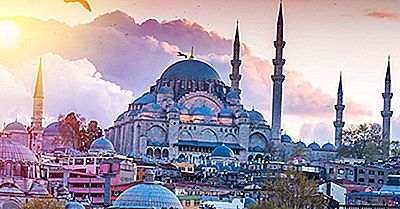Istanbul, formerly Constantinople and Byzantium, is a transcontinental city in Eurasia (Europe and Asia) which dates back to 660 BCE. Although not the capital, Istanbul is the cultural, economic and historical center of Turkey and the most populous city in the country. Istanbul is a historic city that continues to honor and preserve its heritage as the ancient capital of three empires: Roman Empire, Byzantine Empire and Ottoman Empire. In addition to the historic heritage of the city, it also offers modern facilities and continues to project future developments.
Geography
Istanbul spans the Bosphorus Strait, between the Black Sea and the Sea of Marmara. The Bosphorus Strait separates Europe and Asia and connects the Black Sea to the Sea of Marmara. The European part of the city, Thrace, is the economic and historic center, while Anatolia is the Asian part of the city. Nationally, the city is located in the Marmara region in northwestern Turkey, and covers an area of 2,063 square miles. Istanbul is close to the border of the Eurasian and African plates, near the North Anatolian fault, responsible for many earthquakes during the history of Istanbul.
City architecture
Istanbul has several examples of historic Roman, Byzantine and Ottoman architecture, and is listed as a UNESCO World Heritage Site. The building of this city serves as a chronology representing the different cultures and empires that have lived in the region. The Dolmabahçe Palace, used during the Ottoman Empire, serves as the seat of government. Another historic building, the Topkapi Palace, built in the 15th century, is now a museum. The remaining Roman architecture includes the obelisk (fourth century) and the column of Constantine (330 CE). Examples of Byzantine architecture include the Church of Saints Sergius and Bacchus, Stoudios Monastery, Chora Church, Pammakaristos Church and Hagia Sophia. Among the examples of Ottoman architecture,
Demography
As of 2015, Istanbul had a population of 14,657,434, with approximately 98% of the metropolitan area residents living within the city limits. 65% of the population lives on the European side of the city and the rest lives in Asia. The city’s population is growing at 3.45% per year, a figure that reflects the rate of urbanization in Turkey. Only 28% of city dwellers are from Istanbul. The majority of the population is Muslim, especially Sunni Islam, while the largest Christian denomination is Eastern Orthodoxy. There are many ethnic minorities, the largest being the Kurds, who have between two and three million inhabitants. Bosnians, Jews and Levantines are other important immigrant groups.
Weather
Due to the city’s location in a climate transition zone, the Koppen classification indicates that Istanbul has a borderline humid subtropical climate ( Cfa ), Mediterranean climate ( Csa ) and oceanic climate ( Cfb). The city’s climate is further complicated by the existence of several microclimates because the city has coasts on two unique bodies of water. Parts of the north side of the city indicate climates characteristic of humid oceanic and subtropical climates. Due to this high humidity, fog is common in the morning. The southern part is relatively drier, warmer and less humid. Rainfall is also higher in the northern part, which receives 1166.6 mm each year, while the southern part of the city receives an average annual rainfall of 635.0 mm.

